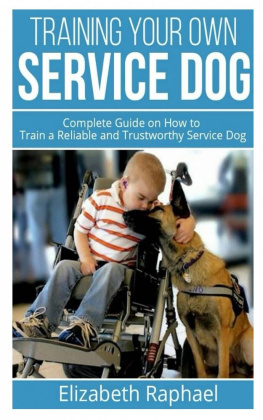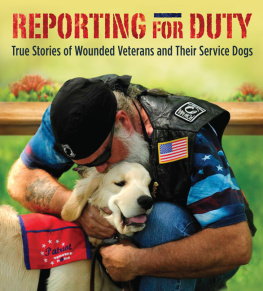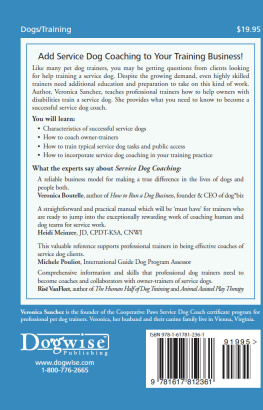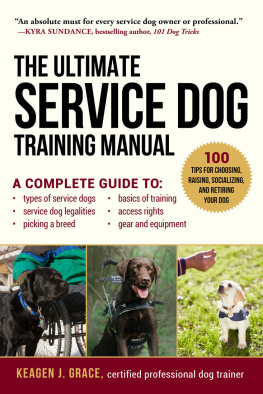TRAINING YOUR OWN SERVICE DOG
Complete Guide on How to Train a Reliable and Trustworthy Service Dog
Elizabeth Raphael
Copyright@2018
TABLE OF CONTENT
CHAPTER 1
INTRODUCTION
A properly trained service dog is a wonderful asset to a person living with disability, service dog usually accompany their owners everywhere including public places that are off limit to dogs, such as libraries, shops, museums, theaters, hospitals and cinemas
But sometimes because these dogs are very important and helpful, there will be a lot of people that wants such dogs
If you want a service dog and cannot wait to get one, you may consider training a service dog yourself
Dogs share our daily lives and provide wonderful health benefits
Dogs have the ability to follow commands and work with us in different ways and be faithful companions in daily life
Service dog have all these abilities
CHAPTER 2
WHAT IS A SERVICE DOG
A service dog helps a person with a disability to live an independent life
A service dog is a dog that is individually trained to do work or perform tasks for a person with a disability
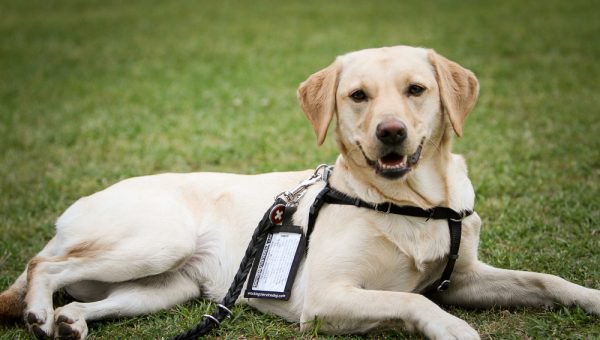
Dog is very vital because they are the only species that are called service animals
TYPES OF SERVICE DOGS
There are three types of service or assistance dogs
They include the following
Guide dogs
Hearing dogs
Service dogs
Guide dogs are those that help the blind and visually impaired individuals to move in the environment
Hearing dogs help alert deaf and difficult hearing individuals to learn important sounds
Service dogs assist individuals with disability rather than those of vision or hearing; this includes dogs that are trained to work with people who use wheelchairs, problem with balancing, autism, need to be alerted to other medical issues such as low blood sugar or have psychiatric disabilities

CHAPTER 3
COMMON SERVICE DOG BREED
The most commonly used breeds for guide dogs and mobile assistant is Labrador Retrievers and Golden Retriever

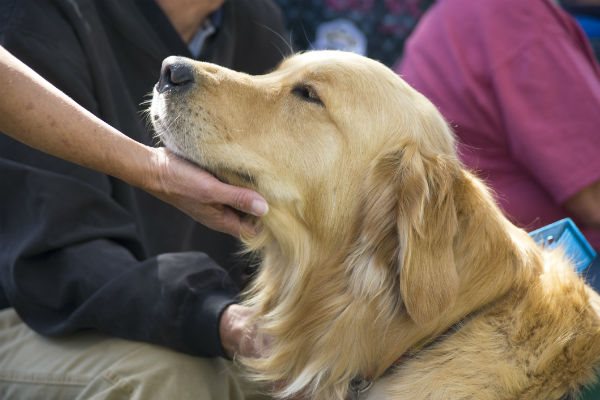
Service dogs range from very small to very big in size and the dog must be able to comfortably perform the tasks that is needed to help move a disable
For instance a papilion is not a good choice to pull a wheelchair but can make an excellent hearing assistance dog or emotional support dog
CHAPTER 4
DIFFERENCE BETWEEN A SERVICE DOG AND A THERAPY DOG
Many individuals confuse a service dog and a therapy dog but they play two entirely different roles that have different characteristics
Service dogs are one dog to each person and perform particular tasks to help that individual cope with disability
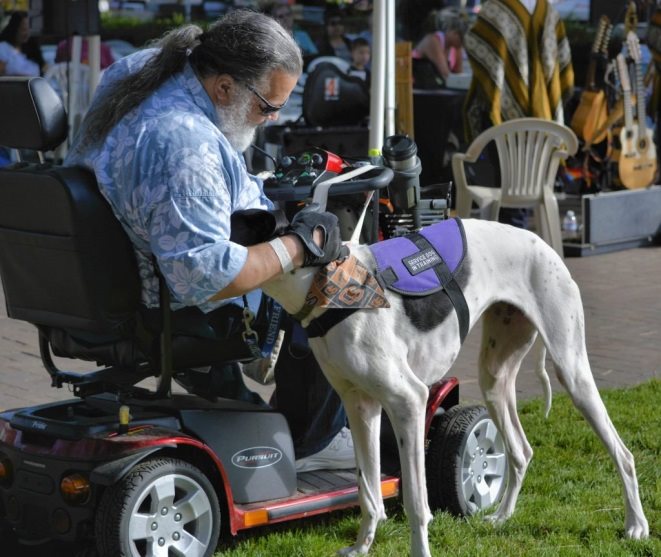
Therapy dogs are one dog for everyone that brings love and comfort to people in nursing home, hospital patients, homeless families and students
Service dogs must be focused, avoid distractions and are highly trained to do particular tasks
They should not be distracted by the public as they should be completely focused to their owners when working
For service dogs, training can be up to two year before they are placed with a client
Service dogs usually wear a vest that identifies them as a service dog and advice people not to pet them
Therapy dog on the other hand should be friendly and cheerful, but obedient and calm and socialized to different places, people and things
Therapy dogs need to be trained in basic manners and obedient and are required to go on continuing education
Therapy dogs and their owners allow petting and affection to different people on a volunteer basis
CHAPTER 5
HOW MUCH A SERVICE DOG COST
Service dogs are very expensive, irrespective of where the dogs come from, trained dogs cost up to $25,000
That includes 2 years of training and the organization food expense and veterinary care
Many organization gives money to people with needs, but cannot afford a service dog
Owner trained service dogs are very expensive when you add up the cost of professional training assistance and daily feeding expenses, it is highly recommended that the owner and the dog work with a professional trainer for the dog
CHAPTER 6
HOW TO KNOW IF YOUR DOG IS QUALIFIED TO BECOME A SERVICE DOG
Not every dog can become a service dog, irrespective of the breed; all service dogs need a particular quality to be reliable at work

They qualities includes
Ability to learn fast and retain important information
Ability to socialize to different environments and conditions
Be able to follow you around
Be able to please
Be very alert
Be very willing to be touched by strangers
Should be calm
CHAPTER 7
TRAINING A SERVICE DOG
Service dog training is a very long and tedious process as dogs must be able to perform their tasks on commands and have to perform the skills that is required for the Assistance Dogs International Public Access Test
A series of objectives that is made to evaluate the behavior of the dog behavior in very distracting environment
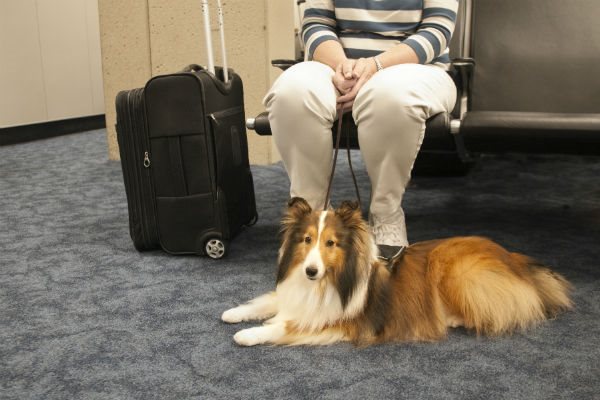
Many service dogs are bred particularly for the job by organizations that they also train them and place them under clients, the organizations have very high standards and not all dogs pass the final requirements to be put with an owner
The dropout rate for organization-trained service dogs can be as high as 50-70%
STEP BY STEP GUIDE TO TRAINING A SERVICE DOG
The following is the step by step guide to training a service dog
Checking the age and health for service dogs

It is important to regularly visit the vet for regular checkup
This is important to check for health problems such as arthritis and diabetes to avoid putting the animals under undue stress
It is essential that the service dog be trained so that the males are not aggressive
Dogs should also be 6 months and above and should no longer the puppies
Test the personality of your dog
Some dogs are aggressive while others are very submissive and in some case that is not a good
Next page
